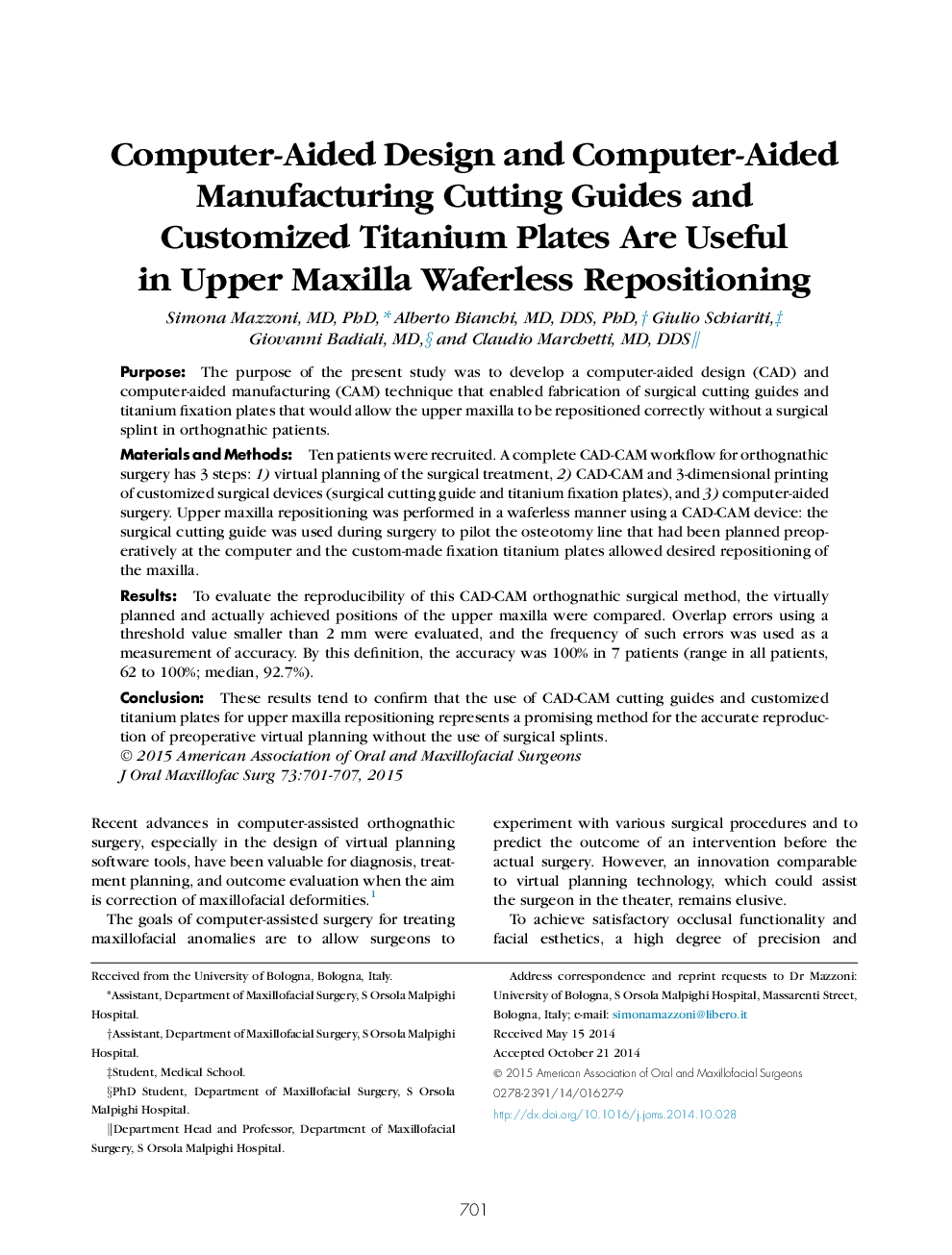| Article ID | Journal | Published Year | Pages | File Type |
|---|---|---|---|---|
| 3153151 | Journal of Oral and Maxillofacial Surgery | 2015 | 7 Pages |
PurposeThe purpose of the present study was to develop a computer-aided design (CAD) and computer-aided manufacturing (CAM) technique that enabled fabrication of surgical cutting guides and titanium fixation plates that would allow the upper maxilla to be repositioned correctly without a surgical splint in orthognathic patients.Materials and MethodsTen patients were recruited. A complete CAD-CAM workflow for orthognathic surgery has 3 steps: 1) virtual planning of the surgical treatment, 2) CAD-CAM and 3-dimensional printing of customized surgical devices (surgical cutting guide and titanium fixation plates), and 3) computer-aided surgery. Upper maxilla repositioning was performed in a waferless manner using a CAD-CAM device: the surgical cutting guide was used during surgery to pilot the osteotomy line that had been planned preoperatively at the computer and the custom-made fixation titanium plates allowed desired repositioning of the maxilla.ResultsTo evaluate the reproducibility of this CAD-CAM orthognathic surgical method, the virtually planned and actually achieved positions of the upper maxilla were compared. Overlap errors using a threshold value smaller than 2 mm were evaluated, and the frequency of such errors was used as a measurement of accuracy. By this definition, the accuracy was 100% in 7 patients (range in all patients, 62 to 100%; median, 92.7%).ConclusionThese results tend to confirm that the use of CAD-CAM cutting guides and customized titanium plates for upper maxilla repositioning represents a promising method for the accurate reproduction of preoperative virtual planning without the use of surgical splints.
